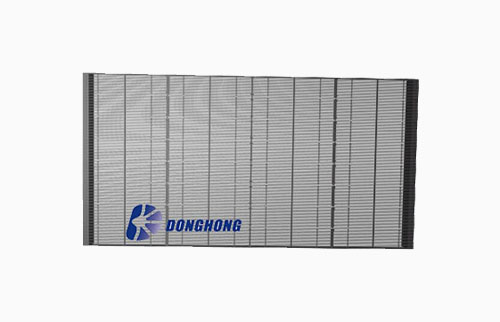Big Transparent LED Display
*3.91-7.81mm pixel pitch *2000x1000mm Cabinet *Profiled aluminum cabinet *500x125mm module

*3.91-7.81mm pixel pitch *2000x1000mm Cabinet *Profiled aluminum cabinet *500x125mm module
The transparent LED screen, also called transparent LED display is a new type of ultra-transparent LED display technology with a transparency of 70% to 95%. Its implementation principle involves micro-innovations on the light bar screen, targeted improvements on chip manufacturing processes, LED encapsulation, and control systems. Coupled with a hollow design structure, it reduces obstruction to the line of sight from structural components, maximizes transparency, seamlessly integrating with the environment.
1. High Transparency, High Light Transmission
The transparency of transparent LED displays can reach 65% to 90%, with each LED strip having a thickness of only 2mm. Gaps between the strips create a transparent effect. Typically installed on the interior side of commercial building glass curtain walls for indoor and outdoor displays, it completely breaks the limitations of traditional LED displays when applied on glass.
2. Simple Structure, Lightweight
Transparent LED displays feature a hollow bar design that is more flexible in structure compared to traditional LED display boxes. It can be customized to fit specific glass dimensions, reducing weight-bearing pressure and better integrating with glass curtain walls.
3. Quick Installation, Easy Maintenance
The flexible structure and lightweight nature of transparent LED displays enable quick and easy installation. In case of a damaged LED strip, only the individual strip needs to be replaced without changing the entire module, leading to efficient indoor maintenance and cost-effectiveness.
4. Green and Energy-Efficient, Good Heat Dissipation
Due to its high transparency, noise-free operation, and low power consumption, transparent LED displays do not require additional cooling devices, utilizing natural airflow for heat dissipation. By displaying only illuminated parts during video advertisements while keeping the rest non-illuminated, it achieves over 30% energy savings compared to conventional LED displays. This display method also reduces energy consumption, minimizes light pollution, and aligns with national energy-saving initiatives.
5. Convenient and Quick Maintenance of Transparent LED Screens
Indoor maintenance is convenient, safe, and saves on manpower and resources.
6. Cost Savings on Building Illumination
Installing transparent LED displays can significantly reduce the lighting fixtures needed on external walls. Additionally, these screens are more captivating, offering both cost savings and advertising benefits.
7. Energy-Efficient and Environmentally Friendly Transparent LED Screens
With low power consumption (average power consumption less than 280W/㎡), they eliminate the need for traditional cooling systems and air conditioning for heat dissipation.
8. Simple Operation, Strong Controllability
They can be connected via Ethernet to a computer, graphics card, or remote transceiver for content changes or controlled wirelessly through remote cluster control, allowing for easy content updates at any time.
Product specifications
| Model | P3.91-7.81 Big Transparent LED Display |
| Pixel pitch | 3.91-7.81mm |
| LED pixel | 1R1G1B |
| Module size | 500*125mm |
| LED type | SMD2121/1921 |
| Pixel density(dots/m2) | 32768 |
| Pixel type | Full color |
| Module resolution | 128*16 |
| Scan mode | 1/8 scan |
| Driving IC | Constant Current Driving |
| Power supply voltage | 5V |
| Working temperature | -30℃ - +50℃ |
| Panel material | Aluminum |
| Panel color | Black/Silver/White |
| Panel size | 2000*1000m |
| Panel resolution | 512*128 |
| Module quantity | 32PCS |
| Brightness | 600-3500cd/㎡ |
| Horizontal viewing angle | 140egree |
| Vertical viewing angle | 140degree |
| Flatness | <1mm |
| Module gap | <1mm |
| Panel weight | 15KG |
| Max power/㎡ | 600W |
| Average power/㎡ | 240W |
| Frame rate | ≥60Hz/s |
| Refresh frequency | 1920Hz |
| Gray level | 16 bits |
| Input signal | RF,S-video,RGB,RGBHV,YUV,YC&Composition,etc |
| Mean time between failures | >5000 hours |
| Lifetime | >100000 hours |



